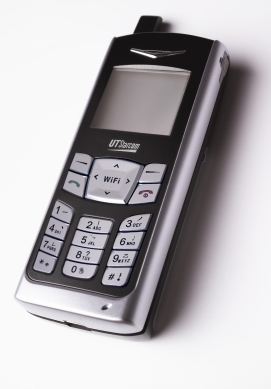 UK VoIP company, Coms, has just launched two WiFi VoIP handsets in advance of their service which is going live on 9 October.
UK VoIP company, Coms, has just launched two WiFi VoIP handsets in advance of their service which is going live on 9 October.
Coms claim their service will be the first in the UK that let people choose their own phone number from 178 UK geographic area codes.
Don’t forget, all you need to use these handsets is a WiFi connection, either yours, or any open connection. We think these services will be big and eventually seriously dent the income of mobile phone companies, especially roaming minutes when people are abroad.
We’ve had our hands on a few VoIP WiFi phones of late or VoWiFi as we’re referring to them, and have generally found them pretty easy to use – despite them clearly being at the early stage of their development.
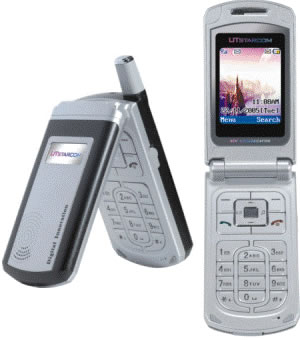 While we’ve not had our hands on these particular handsets (yet – watch this space), we seen shots of them and had sight of the specs. Both work on 802.11b & g and use SIP which will allow them to work with most IP-PBX kit.
While we’ve not had our hands on these particular handsets (yet – watch this space), we seen shots of them and had sight of the specs. Both work on 802.11b & g and use SIP which will allow them to work with most IP-PBX kit.
The F1000 is much like other VoWiFi handsets that we’ve seen and a little reminiscent of early-ish mobile phone handsets. Couple of stats on it. Talk time, up to 4 hours, with a 2-3 hours charge time and a standby of 80-100 hours. It’s 11 x 4.5 x 2.2 cm and weighs in at 111g. The cost? RRP £128 ($239, €189).
The upscale F3000 is a first to us, a VoWiFi handset that is a flip phone. Stats: Talk time, up to 3 hours, with a 2.5 hours charge time and a standby of up to 75 hours. Size: 85 x 43 x 22 mm and weight of 90g. RRP £175 ($326, €258).
Differences between the F1000 and F3000 include the F3000 have a 65k colour 1.8″ screen, polyphonic ringtones.
Shared features are
- Roaming between Wi-Fi access points
- Up to four stored SSIDs with individual security settings
- Up to four hours talk time, up to 100-hours standby time
- Call hold, call waiting, call transfer, call conferencing
- Call logs – made, answered, missed calls
- Caller ID
- Personal address book with auto dial
- Built in Web server for administration
- Automated provisioning – up to 256 byte encryption
- TFTP
- HTTP
Tune in later for reviews of the handsets and the service.
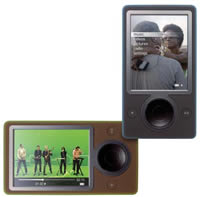 The buzz has been around for months and finally we get to hear the pricing. Retail pricing will be $249 and it will hit the shops in 14th November in the US.
The buzz has been around for months and finally we get to hear the pricing. Retail pricing will be $249 and it will hit the shops in 14th November in the US.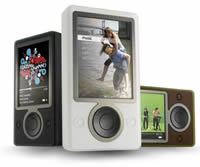 Along side this will be the Zune Pass subscription service, which for $14.99/month will give access to “millions of songs.” The downside on this one is that once you stop paying, your stop getting access to the music.
Along side this will be the Zune Pass subscription service, which for $14.99/month will give access to “millions of songs.” The downside on this one is that once you stop paying, your stop getting access to the music. There’s going to be a ton of accessories available at launch, which are listed at the bottom of the
There’s going to be a ton of accessories available at launch, which are listed at the bottom of the 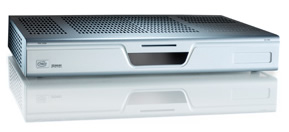 Good news for UK Tech firm Pace Micro as it receives confirmation from number one US cable company, Comcast to ship combined Set Top Box (STB) and PVR.
Good news for UK Tech firm Pace Micro as it receives confirmation from number one US cable company, Comcast to ship combined Set Top Box (STB) and PVR. Comcast is mighty, being the largest provider of cable services in the US, with 23.3 million cable customers, 10 million high-speed Internet customers and 1.6 million voice customers. Their business extends beyond simple cable TV provision, in their own words, they’re “focused on broadband cable, commerce, and content.”
Comcast is mighty, being the largest provider of cable services in the US, with 23.3 million cable customers, 10 million high-speed Internet customers and 1.6 million voice customers. Their business extends beyond simple cable TV provision, in their own words, they’re “focused on broadband cable, commerce, and content.” Producing high quality, well-lit, studio-style photographs can be quite a challenge if you don’t happen to have access to a studio set-up at home or be the proud owner of an expensive camera.
Producing high quality, well-lit, studio-style photographs can be quite a challenge if you don’t happen to have access to a studio set-up at home or be the proud owner of an expensive camera.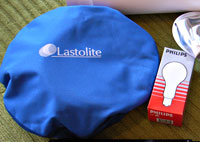 The Cubelite cubes come in a range of sizes, from two foot up to six foot six inches, with each package including a 500w tungsten light and tripod, two-sided silver and white reflector, white background and carry case.
The Cubelite cubes come in a range of sizes, from two foot up to six foot six inches, with each package including a 500w tungsten light and tripod, two-sided silver and white reflector, white background and carry case. Unleashing the beast
Unleashing the beast Following the straightforward instructions, we stuck the lamp on the tripod and set it up so that it shone it through the fabric from a distance of 18 inches.
Following the straightforward instructions, we stuck the lamp on the tripod and set it up so that it shone it through the fabric from a distance of 18 inches. A useful, albeit minimal, single sheet of A4 paper advised us on how to sort out the colour balance on our camera, and before long we were knocking out some s-s-s-studio style photos with ease, with the diffusing material making it a cinch to grab attractive, shadow-free results.
A useful, albeit minimal, single sheet of A4 paper advised us on how to sort out the colour balance on our camera, and before long we were knocking out some s-s-s-studio style photos with ease, with the diffusing material making it a cinch to grab attractive, shadow-free results.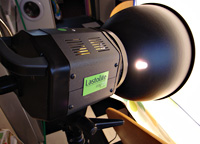 We found the Cubelite easy to lug about, although the towering tripod and heavy duty lamp may have bordered on overkill for such a small set up.
We found the Cubelite easy to lug about, although the towering tripod and heavy duty lamp may have bordered on overkill for such a small set up. Rating
Rating The BBC has signed a Memorandum of Understanding with Microsoft. Areas of the potential investigation and collaboration that the non-exclusive agreement includes, covers “search and navigation, distribution, and content enablement” (what ever that means in English).
The BBC has signed a Memorandum of Understanding with Microsoft. Areas of the potential investigation and collaboration that the non-exclusive agreement includes, covers “search and navigation, distribution, and content enablement” (what ever that means in English). Microsoft has been creeping into the BBC’s online media for a long time now. It first came to light when we broke the story near the start of 2004 that the
Microsoft has been creeping into the BBC’s online media for a long time now. It first came to light when we broke the story near the start of 2004 that the  ViaMichelin is the part of the Michelin group that designs, develops and markets digital travel assistance products. They already have a successful Website that uses information from the Michelin Guide allowing visitors to plan their travel and routes utilising the Guide info.
ViaMichelin is the part of the Michelin group that designs, develops and markets digital travel assistance products. They already have a successful Website that uses information from the Michelin Guide allowing visitors to plan their travel and routes utilising the Guide info.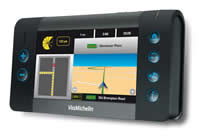 Why get a X-980T?
Why get a X-980T?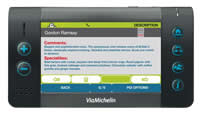 There’s also a speed camera database for the UK (which isn’t actually available yet, but will be in late October) and other countries. Again it’s included in the price (as are updates).
There’s also a speed camera database for the UK (which isn’t actually available yet, but will be in late October) and other countries. Again it’s included in the price (as are updates).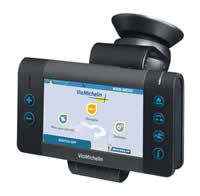 Overall Verdict
Overall Verdict We love a good laugh at overblown press releases that get carried away with themselves, so we certainly cheered up when we got our hands on Sony’s latest artistic offering describing their new Sony’s new Vaio C range of laptops.
We love a good laugh at overblown press releases that get carried away with themselves, so we certainly cheered up when we got our hands on Sony’s latest artistic offering describing their new Sony’s new Vaio C range of laptops. Or maybe, “Cor blimey, who writes this Cobblers?”
Or maybe, “Cor blimey, who writes this Cobblers?”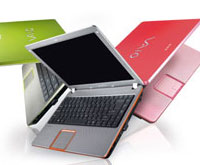 Connectivity options come in the shape of an integrated 802.11a/b/g wireless LAN, Memory Stick Duo, Memory Stick Pro or ExpressCard media slots and i.LINK (IEEE 802.11) and USB ports.
Connectivity options come in the shape of an integrated 802.11a/b/g wireless LAN, Memory Stick Duo, Memory Stick Pro or ExpressCard media slots and i.LINK (IEEE 802.11) and USB ports. With the Photokina 2006 photo fair opening its gates for business, the big guns are rolling out new product announcements at a rate of knots, and Kodak has offered details of their budget-priced 7.1-megapixel EasyShare Z710 Zoom.
With the Photokina 2006 photo fair opening its gates for business, the big guns are rolling out new product announcements at a rate of knots, and Kodak has offered details of their budget-priced 7.1-megapixel EasyShare Z710 Zoom.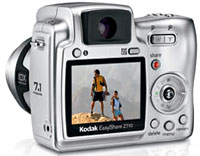 At the rear there’s a (now) rather miserly 2″ LCD, plus the standard array of controls and an optical viewfinder (we like them).
At the rear there’s a (now) rather miserly 2″ LCD, plus the standard array of controls and an optical viewfinder (we like them). Kodak are claiming that the 7.1 megapixel image sensor and ‘professional quality’ Schneider Kreuznach Variogon 10X optical zoom lens are capable of capturing high-quality prints up to 30 x 40 inches (76 x 102 cm), helped by their Kodak Color Science imaging processing chip.
Kodak are claiming that the 7.1 megapixel image sensor and ‘professional quality’ Schneider Kreuznach Variogon 10X optical zoom lens are capable of capturing high-quality prints up to 30 x 40 inches (76 x 102 cm), helped by their Kodak Color Science imaging processing chip.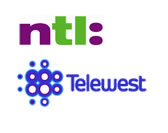 NTL, UK Cable provider, has announced a quad-play offering for £40.
NTL, UK Cable provider, has announced a quad-play offering for £40. Bigging the service up and attempting to create extra excitement for the future, Neil Berkett, chief operating officer of ntl Telewest, enthused: “Quadplay demonstrates the unique power of the cable-Virgin Mobile union and this is just the beginning. Our new package represents unbeatable value while meeting a wide range of consumers’ entertainment and communication needs.
Bigging the service up and attempting to create extra excitement for the future, Neil Berkett, chief operating officer of ntl Telewest, enthused: “Quadplay demonstrates the unique power of the cable-Virgin Mobile union and this is just the beginning. Our new package represents unbeatable value while meeting a wide range of consumers’ entertainment and communication needs. The UK’s broadcasting and telecommunications regulator OFCOM last week made clear its opposition to potential EU regulation. It fears it will straight-jacket the emerging new wave industries aiming to propel high tech growth in the EU zone over the coming years.
The UK’s broadcasting and telecommunications regulator OFCOM last week made clear its opposition to potential EU regulation. It fears it will straight-jacket the emerging new wave industries aiming to propel high tech growth in the EU zone over the coming years. The study also makes clear its’ worries that excessive regulation could mean that countries outside of the EU would benefit from the expected growth in non traditional delivery of multimedia content, before it has established itself in Europe.
The study also makes clear its’ worries that excessive regulation could mean that countries outside of the EU would benefit from the expected growth in non traditional delivery of multimedia content, before it has established itself in Europe.